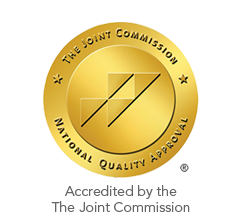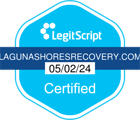Do you think of yourself as a creative person? The fact is that every one of us was born with the innate gift of creativity. Creativity encompasses our ability to think, perform, make, or produce something that never existed before by way of imagination, original ideas, or materials. Some are encouraged to continue with it, while others forget what it is like to have childlike fun, perhaps after being wounded by life. Addiction, among many other things, can stifle creativity. But the good thing is, creativity is a generous and comforting friend which can help you during recovery.
Creativity Heals Emotional Flatness
When you have been an addict for a long time, your emotions tend to be blunted or flattened. Likely, both your physical and emotional health have been stifled under the impact of substance abuse. You may no longer react to your environment with fresh curiosity and intense emotions. This is exactly why learning to be creative again during recovery can be very healing. It may enhance your focus and attentiveness. You begin to notice life’s little details and enjoy creating art, which can stimulate all five senses.
Creative activities also facilitate freedom of emotional expression. There is no right or wrong way to do things, no rigid structure, because to be creative is to pursue any and all possibilities. These new freedoms brought by the gift of creativity can restore your spirit. Accomplishing a project can alleviate a sense of shame that you harbor within yourself due to substance abuse and its negative impact on your life. You may even get to discover a new you! A you who can be free and creative in your expressing feelings through making art, craft, poetry, or music.
Creativity Helps Restore a New Sense of Self
It is often in the pursuit of artistic endeavors that you experience something so fresh that it surpasses simple language. In creative attentiveness, you can temporarily “lose yourself,” which in this case is a good thing. During these moments, restlessness and boredom are gone. Your mind is focused on the object of your creation–you are connected with it in an almost mystic way. That is the healing power of creativity. In “losing yourself,” you actually gain a sense of your truest self, who you no longer have to hide in shadows.
Allow a child-like joy to emerge from the creative you. Activities like making music, drawing or painting, baking, even acting, may connect you with the simple joy of creating something new. Like a child who marvels at his or her own first watercolor painting, you can also revisit that kind of joy. Think back to the days when you were young or observe how children play and create. Allow happiness, wonder, and a sense of purpose to re-emerge naturally from the creative process. Remember: you don’t have to be good at something to do it and to enjoy it. Do it for the simple pleasure of it!
Exploring Creativity during Recovery
Many detox and treatment centers have programs that help you explore your creative side to support you during recovery. Health professionals agree that creativity can provide a safe space for patients to express true emotions. It also helps boost self-esteem and self-image. Creativity is helpful during recovery because it is an effective tool in the fight against boredom and cravings. Since many addiction cases originate from trauma and abuse, creativity can be especially healing in coping with trauma and loss. At your treatment center, try music or art therapy or yoga or mindfulness exercises. Here are some practical tips for you to consider:
- Explore how you create with words by keeping a journal. You can use it to vent or to celebrate your small victories. Most importantly, let it be a safe place to connect with yourself.
- Learn a new creative hobby, like art, cooking, or a musical instrument.
- Do not let perfectionism get in the way of your new creative self. Treat yourself gently and have fun! Like playful young children, you are not expected to get things perfect but to enjoy yourself. Allow a “can-do” attitude to uplift you.
Your creative exploration can continue after treatment. You may consider using the local library for similar activities. Join a woodwork club, for example, or look for creative project ideas in magazines or online. Socialize with a creative friend or family member and get to know more about their craft. Free resources abound on YouTube that help you become a budding artist and crafter. As you engage in more creative activities, remember that the goal is not to be perfect at it, but to allow yourself to enjoy the process. The principle is good self-care and emotional health.
Have you forgotten the joy of being creative? Do you know that creativity can help you immensely during addiction recovery? Exploring creative activities can aid you in fighting off cravings and boredom. In the long run, being creative is also good for your emotional health. If you or your loved one wants to explore creative activities at a treatment center, come and visit Laguna Shores Recovery. We believe in a holistic approach to sustainable recovery, and our staff are experienced in coaching and supporting patients. Our abundance of creativity programs are designed to work together with a range of treatment plans, including cognitive and behavioral therapies, family relationship programs, 12-step groups, and alumni services. Laguna Shores Recovery is also a complete medical and pet-friendly residential facility. Most of our staff have been there in the journey of addiction recovery. Call us at 954-688-5806, and we would be happy to welcome you.

 Matthew Beck B.A, M.A, LMFT
Matthew Beck B.A, M.A, LMFT 


